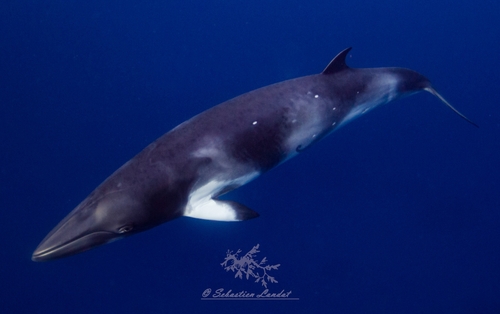
Common Minke Whale
The agile Balaenoptera acutorostrata, or common minke whale, graces oceans globally, showcasing a sleek body and pointed snout. Known for its curious nature, it often nears boats. Vital to marine ecosystems, it helps balance food chains by consuming krill and small fish.
30-50 years
Lifespan
4536.0 kg
Weight
Brown, Grey, Black, White
Color
13 mph
Top Speed
Least Concern
Conservation Status
Unknown
Population Trend
Characteristics
The Balaenoptera acutorostrata, commonly known as the common minke whale, is a small baleen whale with a streamlined body and a distinctive pointed snout. It inhabits oceans worldwide, primarily in polar and temperate waters. Notable for its curiosity, the minke often approaches boats, displaying agile movements. Its role in the ecosystem includes regulating marine food chains by feeding on krill and small fish.
Distribution Range of the Common Minke Whale
Balaenoptera acutorostrata, commonly known as the minke whale, is found in oceans worldwide, including the North Atlantic, North Pacific, and Southern Hemisphere. They are particularly abundant in the waters around the North Atlantic, from the eastern coast of the United States to Europe, and around the North Pacific, from the eastern coast of Asia to North America. Additionally, minke whales inhabit the Southern Ocean around Antarctica during the austral summer.
Common Minke Whale's Habitat
Environmental Conditions
Minke whales inhabit a variety of marine environments but are commonly found in cold and temperate waters. They are known to occupy coastal and offshore areas, often preferring areas with rich feeding grounds. Their habitat includes both open ocean and nearshore waters, and they are frequently seen in areas with sea ice, particularly in the polar regions during summer feeding seasons.
Ecological Niche
As baleen whales, minke whales primarily feed on small schooling fish such as herring and capelin, as well as krill and other small crustaceans. They are a part of the oceanic food web and play a crucial role in maintaining the balance of marine ecosystems. Minke whales are known for their adaptability to different marine environments, which allows them to exploit a wide range of prey across their vast distribution.
Copyright @ Nature Style Limited. All Rights Reserved.
 English
English